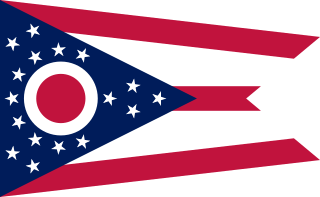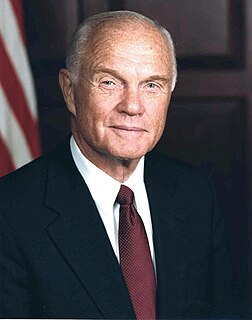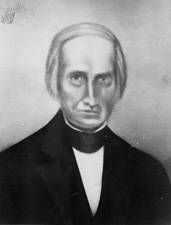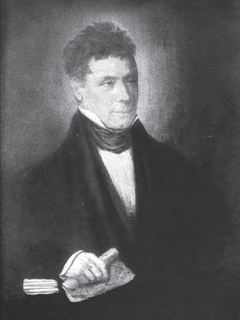Class 1 Class 1 U.S. Senators belong to the electoral cycle that has recently been contested in 2000, 2006, 2012, and 2018. The next election will be in 2024. | C
o
n
g
r
e
s
s | Class 3 Class 3 U.S. Senators belong to the electoral cycle that has recently been contested in 2004, 2010, and 2016. The next election will be in 2022. |
|---|
| # | Senator | Party | Years in office | Electoral history | T
e
r
m | T
e
r
m | Electoral history | Years in office | Party | Senator | # |
|---|
| 1 | 
John Smith | Democratic-
Republican | April 1, 1803 –
April 25, 1808 | Elected April 1, 1803. [1]
Resigned. | 1 | 8th | 1 | Elected April 1, 1803. [1]
Retired. | April 1, 1803 –
March 3, 1807 | Democratic-
Republican | 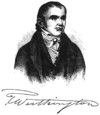
Thomas Worthington | 1 |
|---|
| 9th |
| 10th | 2 | Elected January 1, 1807. [2]
Resigned. | March 4, 1807 –
March 3, 1809 | Democratic-
Republican | 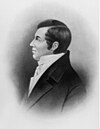
Edward Tiffin | 2 |
|---|
| Vacant | April 25, 1808 –
December 12, 1808 | |
| 2 | 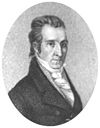
Return J. Meigs, Jr. | Democratic-
Republican | December 12, 1808 –
December 8, 1810 | Elected December 10, 1808 to finish Smith's term. [3] |
|---|
Elected December 10, 1808 to full term. [3]
Resigned to become Governor of Ohio. | 2 | 11th | | March 4, 1809 –
May 18, 1809 | Vacant |
Appointed to finish Tiffin's term. [3]
Retired when successor elected. | May 18, 1809 –
December 11, 1809 | Democratic-
Republican | 
Stanley Griswold | 3 |
|---|
| Vacant | December 8, 1810 –
December 15, 1810 | |
Elected to finish Tiffin's term.
Retired. | December 11, 1809 –
March 3, 1813 | Democratic-
Republican | 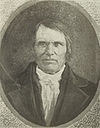
Alexander Campbell | 4 |
|---|
| 3 | 
Thomas Worthington | Democratic-
Republican | December 15, 1810 –
December 1, 1814 | Elected to finish Meigs's term.
Resigned to become Governor of Ohio. |
|---|
| 12th |
| 13th | 3 | Elected February 6, 1813.
Retired. | March 4, 1813 –
March 3, 1819 | Democratic-
Republican | 
Jeremiah Morrow | 5 |
|---|
| Vacant | December 1, 1814 –
December 10, 1814 | |
| 4 | 
Joseph Kerr | Democratic-
Republican | December 10, 1814 –
March 3, 1815 | Elected to finish Worthington's term.
Retired. |
|---|
| 5 | 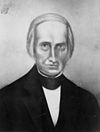
Benjamin Ruggles | Democratic-
Republican | March 4, 1815 –
March 3, 1833 | Elected January 7, 1815. | 3 | 14th |
|---|
| 15th |
| 16th | 4 | Elected January 30, 1819.
Died. | March 4, 1819 –
December 13, 1821 | Democratic-
Republican | 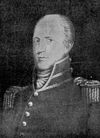
William A. Trimble | 6 |
|---|
| Re-elected in 1821. | 4 | 17th |
| | December 13, 1821 –
January 3, 1822 | Vacant |
Elected to finish Trimble's term.
Lost re-election. | January 3, 1822 –
March 3, 1825 | Democratic-
Republican | 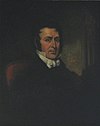
Ethan Allen Brown | 7 |
|---|
Crawford
Republican | 18th | Adams-Clay
Republican |
Anti-
Jacksonian | 19th | 5 | Elected in 1824.
Resigned to become U.S. Minister to Colombia. | March 4, 1825 –
May 20, 1828 | Anti-
Jacksonian | 
William Henry Harrison | 8 |
|---|
Re-elected in 1827.
Retired. | 5 | 20th |
| | May 20, 1828 –
December 10, 1828 | Vacant |
Elected to finish Harrison's term.
Retired. | December 10, 1828 –
March 3, 1831 | Anti-Jacksonian | 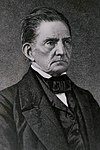
Jacob Burnet | 9 |
|---|
| 21st |
| 22nd | 6 | Elected in 1830.
Lost re-election. | March 4, 1831 –
March 3, 1837 | Anti-
Jacksonian | 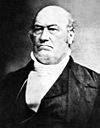
Thomas Ewing | 10 |
|---|
| 6 | 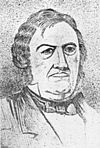
Thomas Morris | Jacksonian | March 4, 1833 –
March 3, 1839 | Elected in 1833.
Retired. | 6 | 23rd |
|---|
| 24th |
| Democratic | 25th | 7 | Elected in 1837. | March 4, 1837 –
March 3, 1849 | Democratic | 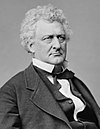
William Allen | 11 |
|---|
| 7 | 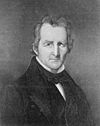
Benjamin Tappan | Democratic | March 4, 1839 –
March 3, 1845 | Elected in 1838.
Retired. | 7 | 26th |
|---|
| 27th |
| 28th | 8 | Re-elected in 1842.
Lost re-election. |
| 8 | 
Thomas Corwin | Whig | March 4, 1845 –
July 20, 1850 | Elected December 5, 1844.
Resigned to become U.S. Secretary of the Treasury. | 8 | 29th |
|---|
| 30th |
| 31st | 9 | Elected in 1849.
Retired. | March 4, 1849 –
March 3, 1855 | Free Soil | 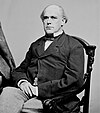
Salmon P. Chase | 12 |
|---|
| 9 | 
Thomas Ewing | Whig | July 20, 1850 –
March 3, 1851 | Appointed to finish Corwin's term.
Lost election to the next term. |
|---|
| Vacant | March 4, 1851 –
March 15, 1851 | | 9 | 32nd |
| 10 | 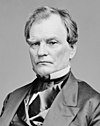
Benjamin Wade | Whig | March 15, 1851 –
March 3, 1869 | Elected March 15, 1851 on 37th ballot. |
|---|
| 33rd |
| Republican | 34th | 10 | Elected in 1854
Lost re-election. | March 4, 1855 –
March 3, 1861 | Democratic | 
George E. Pugh | 13 |
|---|
| Re-elected in 1856. | 10 | 35th |
| 36th |
| 37th | 11 | Elected in 1860.
Resigned to become U.S. Secretary of the Treasury. | March 4, 1861 –
March 6, 1861 | Republican | 
Salmon P. Chase | 14 |
|---|
| | March 6, 1861 –
March 21, 1861 | Vacant |
| Elected to finish Chase's term. | March 21, 1861 –
March 8, 1877 | Republican | 
John Sherman | 15 |
|---|
Re-elected in 1863.
Lost renomination. | 11 | 38th |
| 39th |
| 40th | 12 | Re-elected in 1866. |
| 11 | 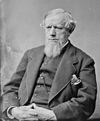
Allen G. Thurman | Democratic | March 4, 1869 –
March 3, 1881 | Elected in 1868. | 12 | 41st |
|---|
| 42nd |
| 43rd | 13 | Re-elected in 1872.
Resigned to become U.S. Secretary of the Treasury. |
Re-elected in 1874.
Lost re-election. | 13 | 44th |
| 45th |
| | March 8, 1877 –
March 21, 1877 | Vacant |
Elected to finish Sherman's term.
Retired. | March 21, 1877 –
March 3, 1879 | Republican | 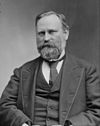
Stanley Matthews | 16 |
|---|
| 46th | 14 | Election date unknown.
Lost renominiation. | March 4, 1879 –
March 3, 1885 | Democratic | 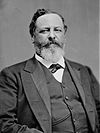
George H. Pendleton | 17 |
|---|
| 12 | 
John Sherman | Republican | March 4, 1881 –
March 4, 1897 | Elected in 1881. | 14 | 47th |
|---|
| 48th |
| 49th | 15 | Elected January 15, 1884.
Retired. | March 4, 1885 –
March 3, 1891 | Democratic | 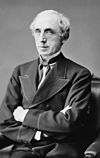
Henry B. Payne | 18 |
|---|
| Re-elected in 1886. | 15 | 50th |
| 51st |
| 52nd | 16 | Elected in 1890.
Lost re-election. [9] | March 4, 1891 –
March 3, 1897 | Democratic | 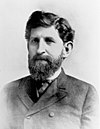
Calvin S. Brice | 19 |
|---|
Re-elected in 1892.
Resigned. | 16 | 53rd |
| 54th |
| 55th | 17 | Elected in 1896. | March 4, 1897 –
March 3, 1909 | Republican | 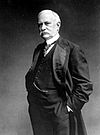
Joseph B. Foraker | 20 |
|---|
| 13 | 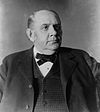
Marcus A. Hanna | Republican | March 5, 1897 –
February 15, 1904 | Appointed to continue Sherman's term.
Elected January 12, 1898 to finish Sherman's term. |
|---|
Elected January 12, 1898 to the next term.
Died. | 17 | 56th |
| 57th |
| 58th | 18 | Re-elected January 15, 1902. [11]
Retired. [12] |
| Vacant | February 15, 1904 –
March 23, 1904 | |
| 14 | 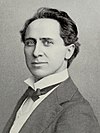
Charles W. F. Dick | Republican | March 23, 1904 –
March 3, 1911 | Elected March 2, 1904 to finish Hanna's term. |
|---|
Elected March 2, 1904 to the next term.
Lost re-election. | 18 | 59th |
| 60th |
| 61st | 19 | Elected January 12, 1909. [12]
Retired. | March 4, 1909 –
March 3, 1915 | Republican | 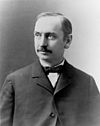
Theodore E. Burton | 21 |
|---|
| 15 | 
Atlee Pomerene | Democratic | March 4, 1911 –
March 3, 1923 | Elected January 10, 1911. | 19 | 62nd |
|---|
| 63rd |
| 64th | 20 | Elected in 1914.
Retired to run for U.S. President.
Resigned to become U.S. President. | March 4, 1915 –
January 13, 1921 | Republican | 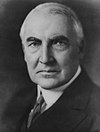
Warren G. Harding | 22 |
|---|
Re-elected in 1916.
Lost re-election. | 20 | 65th |
| 66th |
| Appointed to finish Harding's term, having been elected to the next term. | January 14, 1921 –
March 30, 1928 | Republican | 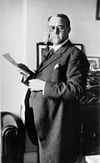
Frank B. Willis | 23 |
|---|
| 67th | 21 | Elected in 1920. |
| 16 | 
Simeon D. Fess | Republican | March 4, 1923 –
January 3, 1935 | Elected in 1922. | 21 | 68th |
|---|
| 69th |
| 70th | 22 | Re-elected in 1926.
Died. |
| | March 30, 1928 –
April 5, 1928 | Vacant |
Appointed to continue Willis's term.
Lost nomination to finish Willis's term. | April 5, 1928 –
December 14, 1928 | Democratic | 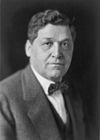
Cyrus Locher | 24 |
|---|
Elected to finish Willis's term.
Died. | December 15, 1928 –
October 28, 1929 | Republican | 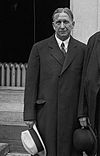
Theodore E. Burton | 25 |
|---|
Re-elected in 1928.
Lost re-election. | 22 | 71st |
| | October 28, 1929 –
November 5, 1929 | Vacant |
Appointed to continue Burton's term.
Lost election to finish Burton's term. | November 5, 1929 –
November 30, 1930 | Republican | 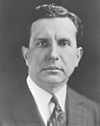
Roscoe C. McCulloch | 26 |
|---|
| Elected November 4, 1930 to finish Burton's term. | December 1, 1930 –
January 3, 1939 | Democratic | 
Robert J. Bulkley | 27 |
|---|
| 72nd |
| 73rd | 23 | Re-elected in 1932.
Lost re-election. |
| 17 | 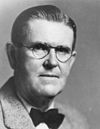
A. Victor Donahey | Democratic | January 3, 1935 –
January 3, 1941 | Elected in 1934.
Retired. | 23 | 74th |
|---|
| 75th |
| 76th | 24 | Elected in 1938. | January 3, 1939 –
July 31, 1953 | Republican | 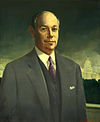
Robert A. Taft | 28 |
|---|
| 18 | 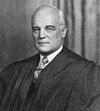
Harold H. Burton | Republican | January 3, 1941 –
September 30, 1945 | Elected in 1940.
Resigned when appointed to the U.S. Supreme Court. | 24 | 77th |
|---|
| 78th |
| 79th | 25 | Re-elected in 1944. |
| Vacant | September 30, 1945 –
October 8, 1945 | |
| 19 | 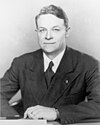
James W. Huffman | Democratic | October 8, 1945 –
November 5, 1946 | Appointed to continue Burton's term.
Retired when successor elected. |
|---|
| 20 | 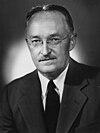
Kingsley A. Taft | Republican | November 5, 1946 –
January 3, 1947 | Elected to finish Burton's term.
Retired. |
|---|
| 21 | 
John W. Bricker | Republican | January 3, 1947 –
January 3, 1959 | Elected in 1946. | 25 | 80th |
|---|
| 81st |
| 82nd | 26 | Re-elected in 1950.
Died. |
Re-elected in 1952.
Lost re-election. | 26 | 83rd |
| | July 31, 1953 –
November 10, 1953 | Vacant |
Appointed to continue Taft's term.
Lost election to finish Taft's term. | November 10, 1953 –
December 2, 1954 | Democratic | 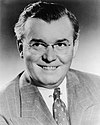
Thomas A. Burke | 29 |
|---|
| | December 2, 1954 –
December 16, 1954 | Vacant |
Elected to finish Taft's term.
Lost re-election. | December 16, 1954 –
January 3, 1957 | Republican | 
George H. Bender | 30 |
|---|
| 84th |
| 85th | 27 | Elected in 1956. | January 3, 1957 –
January 3, 1969 | Democratic | 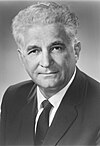
Frank J. Lausche | 31 |
|---|
| 22 | 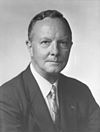
Stephen M. Young | Democratic | January 3, 1959 –
January 3, 1971 | Elected in 1958. | 27 | 86th |
|---|
| 87th |
| 88th | 28 | Re-elected in 1962.
Lost renomination. |
Re-elected in 1964.
Retired. | 28 | 89th |
| 90th |
| 91st | 29 | Elected in 1968.
Resigned to become U.S. Attorney General. | January 3, 1969 –
January 3, 1974 | Republican | 
William B. Saxbe | 32 |
|---|
| 23 | 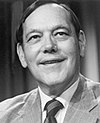
Robert Taft, Jr. | Republican | January 3, 1971 –
December 28, 1976 | Elected in 1970.
Lost re-election and resigned early. | 29 | 92nd |
|---|
| 93rd |
Appointed to finish Saxbe's term.
Lost renomination and resigned early. | January 4, 1974 –
December 23, 1974 | Democratic | 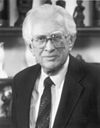
Howard Metzenbaum | 33 |
|---|
| Appointed to finish Metzenbaum's term, having been elected to the next term. | December 24, 1974 –
January 3, 1999 | Democratic | 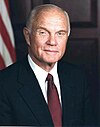
John Glenn | 34 |
|---|
| 94th | 30 | Elected in 1974. |
| 24 | 
Howard Metzenbaum | Democratic | December 29, 1976 –
January 3, 1995 | Appointed to finish Taft's term, having been elected to the next term. |
|---|
| Elected in 1976. | 30 | 95th |
| 96th |
| 97th | 31 | Re-elected in 1980. |
| Re-elected in 1982. | 31 | 98th |
| 99th |
| 100th | 32 | Re-elected in 1986. |
Re-elected in 1988.
Retired. | 32 | 101st |
| 102nd |
| 103rd | 33 | Re-elected in 1992.
Retired. |
| 25 | 
Mike DeWine | Republican | January 3, 1995 –
January 3, 2007 | Elected in 1994. | 33 | 104th |
|---|
| 105th |
| 106th | 34 | Elected in 1998. | January 3, 1999 –
January 3, 2011 | Republican | 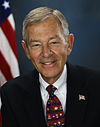
George Voinovich | 35 |
|---|
Re-elected in 2000.
Lost re-election. | 34 | 107th |
| 108th |
| 109th | 35 | Re-elected in 2004.
Retired. |
| 26 | 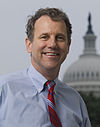
Sherrod Brown | Democratic | January 3, 2007 –
present | Elected in 2006. | 35 | 110th |
|---|
| 111th |
| 112th | 36 | Elected in 2010. | January 3, 2011 –
present | Republican | 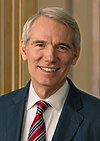
Rob Portman | 36 |
|---|
| Re-elected in 2012. | 36 | 113th |
| 114th |
| 115th | 37 | Re-elected in 2016. |
| Re-elected in 2018. | 37 | 116th |
| 117th |
| 118th | 38 | To be determined in the 2022 election. |
| To be determined in the 2024 election. | 38 | 119th |
| # | Senator | Party | Years in office | Electoral history | T
e
r
m | | T
e
r
m | Electoral history | Years in office | Party | Senator | # |
|---|
| Class 1 | Class 3 |
|---|
